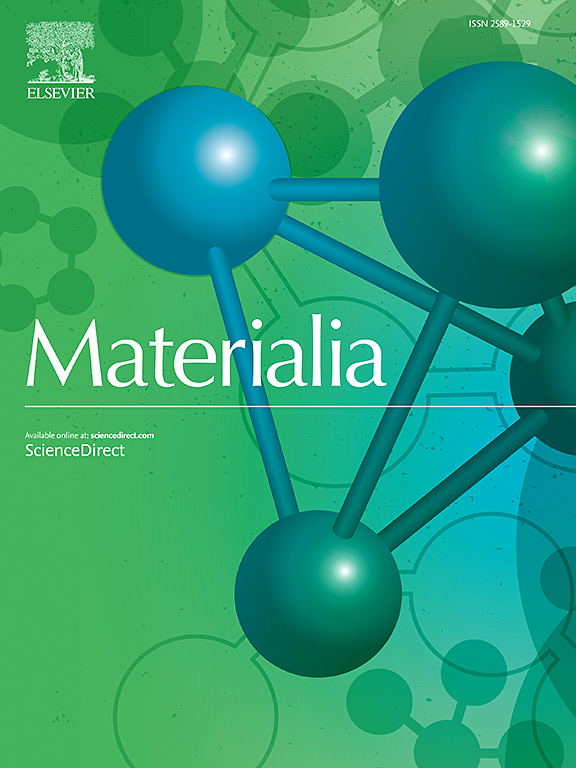Elastic wave propagation in textured polycrystalline materials: A computationally-efficient and experimentally-supported approach
IF 3
Q2 MATERIALS SCIENCE, MULTIDISCIPLINARY
引用次数: 0
Abstract
In this study, a computationally efficient and experimentally supported approach has been introduced in order to simulate the elastic wave propagation in polycrystalline materials, primarily for investigating the influence of texture intensity on the wave’s group velocity. To this end, synthetic microstructures were generated using a voxel-based software, with systematically varying texture intensities, guided by both analytical inputs and experimentally derived Euler angles from deformed and annealed copper samples. A key novelty of this methodology is the use of a reduced set of the most frequently occurring Euler angles, each assigned a weight, which preserves the texture characteristics while significantly reducing computational demand. To isolate the influence of grain orientation, grain size distribution was kept constant across all cases. Time-domain wave propagation studies were then performed in a commercially available finite element solver to analyse wave behaviour. The results demonstrated that increasing texture intensity in two different texture conditions, namely Cube {001} and Copper {112}, shows a reduction in grain boundary scattering, and a gradual shift in group velocity between isotropic and single crystal bound. For a practical scenario, microstructures containing multiple texture components were also investigated, revealing an intermediate velocity between the two bounds, which facilitates recognizing the presence of weak or strong texture in a material. This integrative and resource-optimized approach not only strengthens the understanding of elastic wave behaviour at the micron-scale, but also contributes towards advancing the non-destructive characterization of crystallographic texture.

弹性波在纹理多晶材料中的传播:一种计算效率和实验支持的方法
本研究引入了一种计算效率高且实验支持的方法来模拟弹性波在多晶材料中的传播,主要是为了研究织构强度对波群速度的影响。为此,使用基于体素的软件生成合成微观结构,在变形和退火铜样品的分析输入和实验导出的欧拉角的指导下,系统地改变了纹理强度。该方法的一个关键新颖之处在于使用了一组最频繁出现的欧拉角,每个角都分配了一个权重,这在保留纹理特征的同时显着减少了计算需求。为了隔离晶粒取向的影响,在所有情况下,晶粒尺寸分布保持不变。然后在市售的有限元求解器中进行时域波传播研究,以分析波的行为。结果表明,在Cube{001} < 100 >和Copper{112} < 111 >两种织构条件下,增加织构强度,晶界散射减小,群速度在各向同性和单晶界之间逐渐转变。对于一个实际场景,包含多个纹理成分的微观结构也进行了研究,揭示了两个边界之间的中间速度,这有助于识别材料中弱或强纹理的存在。这种综合和资源优化的方法不仅加强了对微米尺度弹性波行为的理解,而且有助于推进晶体结构的非破坏性表征。
本文章由计算机程序翻译,如有差异,请以英文原文为准。
求助全文
约1分钟内获得全文
求助全文
来源期刊

Materialia
MATERIALS SCIENCE, MULTIDISCIPLINARY-
CiteScore
6.40
自引率
2.90%
发文量
345
审稿时长
36 days
期刊介绍:
Materialia is a multidisciplinary journal of materials science and engineering that publishes original peer-reviewed research articles. Articles in Materialia advance the understanding of the relationship between processing, structure, property, and function of materials.
Materialia publishes full-length research articles, review articles, and letters (short communications). In addition to receiving direct submissions, Materialia also accepts transfers from Acta Materialia, Inc. partner journals. Materialia offers authors the choice to publish on an open access model (with author fee), or on a subscription model (with no author fee).
 求助内容:
求助内容: 应助结果提醒方式:
应助结果提醒方式:


